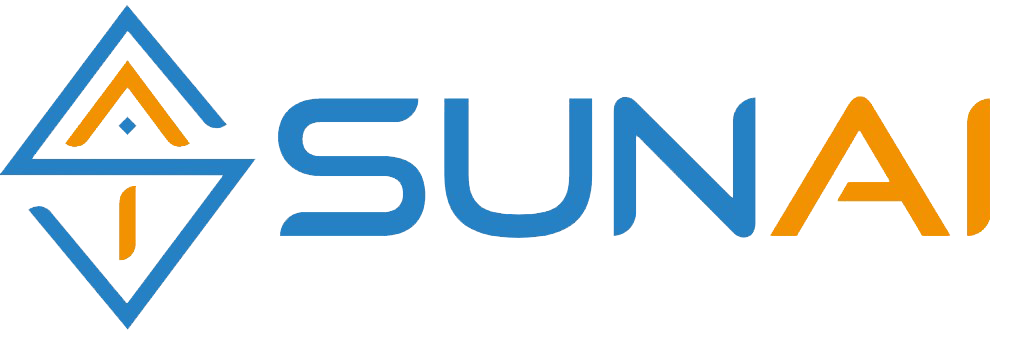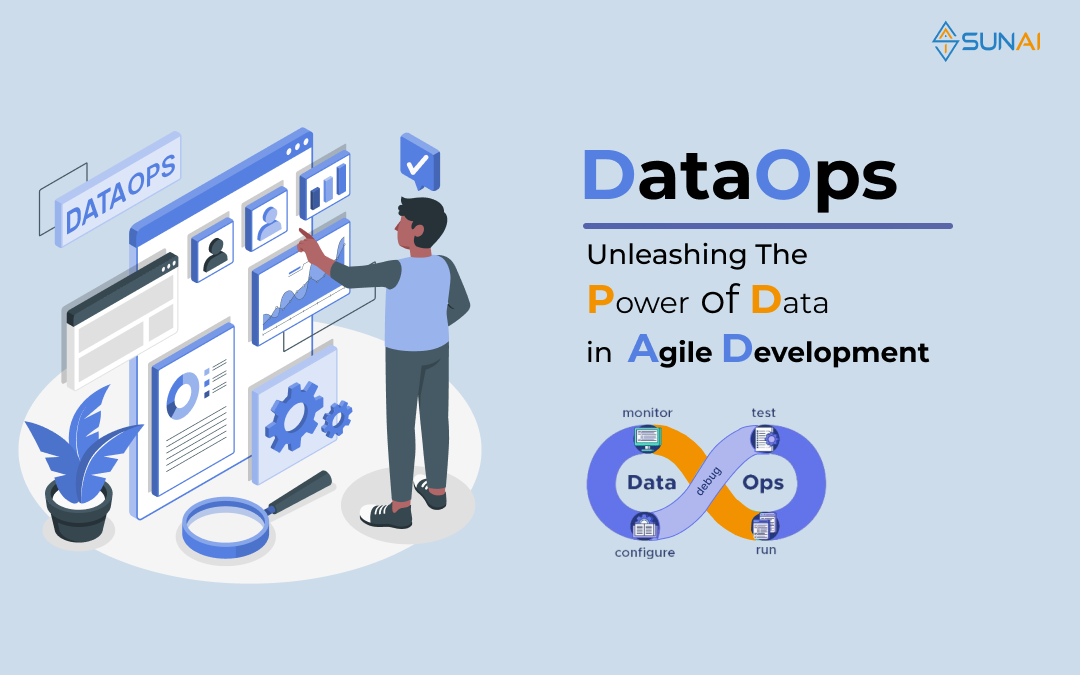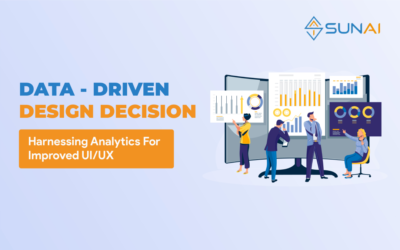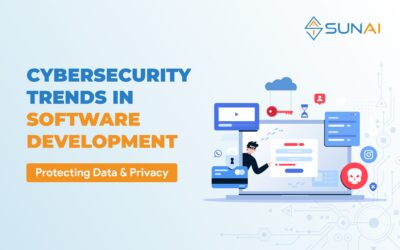In the world of agile development, data is king. But how do you effectively harness its power to drive innovation and boost productivity? Enter DataOps, the game-changing approach that is revolutionizing the way organizations work with data. With DataOps, teams can seamlessly integrate data into their agile processes, enabling faster, more efficient decision-making and allowing for greater collaboration among cross-functional teams.
DataOps combines the best practices of DevOps with data management principles to create a streamlined and automated data pipeline. This ensures that data is available on-demand, in a consistent and reliable manner, empowering teams to make data-driven decisions and deliver high-quality products and services.
By embracing DataOps, organizations can unlock the true potential of their data and gain a competitive edge in today’s fast-paced business landscape. From improving data quality to accelerating time-to-market, DataOps offers a range of benefits that can transform the way companies operate.
The importance of data in agile development
Data plays a crucial role in agile development. It provides valuable insights into customer behavior, market trends, and product performance, helping teams make informed decisions and prioritize tasks effectively. In an agile environment, where speed and adaptability are paramount, data-driven decision-making becomes even more critical.
For example, imagine a software development team working on a new feature for an e-commerce platform. By analyzing user data, they can identify patterns and preferences, allowing them to tailor the feature to meet the needs of their target audience. This not only improves the user experience but also increases the chances of success in the market.
Furthermore, data can help teams measure the impact of their work and track progress toward their goals. By setting up relevant metrics and regularly monitoring them, teams can gain visibility into their performance and make data-backed adjustments to their strategies. This iterative approach, fueled by data, is at the heart of agile development.
However, harnessing the power of data in agile development is not without its challenges.
Challenges in managing data in agile development
While data holds immense potential, managing it effectively in an agile development environment can be complex. Here are some common challenges that organizations face:
- Data availability: Agile teams rely on prompt access to precise and pertinent data to facilitate well-informed decision-making processes. Yet, data is frequently dispersed across various platforms, presenting difficulties in its efficient location and utilization. This issue is effectively tackled through the implementation of DataOps, a methodology that focuses on establishing a seamless data pipeline. By doing so, DataOps ensures that data is readily available whenever needed, thereby empowering agile teams to operate with enhanced efficiency and effectiveness.
- Data quality: Inaccurate or incomplete data can have far-reaching implications, leading to flawed insights, erroneous conclusions, and ultimately, poor decision-making. For agile teams, maintaining high data quality is paramount as it forms the bedrock of their operations. The ability to trust and rely on the information at hand is crucial for swift, effective decision-making and smooth project execution.
- The Role of DataOps: This is where DataOps comes into play, emphasizing the criticality of data quality management. By seamlessly integrating data cleansing, validation, and enrichment processes into the data pipeline, DataOps ensures that the data utilized by agile teams is not only accurate and complete but also optimized for maximum utility. This meticulous approach not only enhances the reliability of the data but also instills confidence within agile teams, empowering them to make informed decisions with unwavering certainty.
- Data Integration: The Role of Agile Development in Streamlining Data Integration Agile development, characterized by the collaboration of cross-functional teams, plays a pivotal role in the seamless integration of data from diverse sources and systems. In today’s dynamic business landscape, where the need for efficient data handling is paramount, Agile development provides a framework for teams to work concurrently on different project components, thereby expediting the integration process.
However, the complexity of integrating data from various sources often poses challenges such as time consumption and potential errors. This is where DataOps emerges as a game-changer, simplifying data integration through automation. By leveraging DataOps practices, teams can streamline the process of accessing and combining data, ultimately fostering a more efficient and error-resistant data integration workflow. - Data governance: Data governance has become increasingly essential with the exponential growth in data generation and processing. Agile teams are confronted with the responsibility of upholding stringent data privacy and security regulations, particularly when dealing with sensitive information. Therefore, the implementation of DataOps has emerged as a pivotal framework for enforcing robust data governance policies and controls. By embracing DataOps, organizations can effectively ensure compliance with regulations and fortify their data security measures, thereby mitigating potential risks associated with data mishandling.
Addressing these challenges requires a holistic and systematic approach, which is where DataOps comes into play.
Also Read Data Security Management in Offshore Software Development
What is DataOps and how does it work?
DataOps is a methodology that combines the principles of DevOps with data management practices to create a streamlined and automated data pipeline. It focuses on collaboration, integration, and automation, enabling teams to work with data in an agile and efficient manner.
At its core, DataOps aims to break down silos and foster collaboration between different teams involved in data operations. This includes data engineers, data scientists, analysts, and developers, among others. By promoting cross-functional collaboration, DataOps ensures that different perspectives and expertise are brought together to derive meaningful insights from data.
The key components of DataOps are:
- Data integration: DataOps plays a crucial role in modern data management by prioritizing the seamless integration of data from a multitude of sources, including internal databases and external data streams. This holistic approach ensures that teams can effortlessly access and work with a comprehensive dataset, fostering collaboration and informed decision-making. By mitigating data fragmentation and streamlining the data pipeline, organizations can significantly enhance operational efficiency and derive actionable insights that drive business success.
- Data quality management: Ensuring the quality of data is a critical aspect of DataOps, which is essential for the success of any data-driven organization. It involves implementing robust processes and cutting-edge tools to cleanse, validate, and enrich data, thereby improving its accuracy, completeness, and reliability. By maintaining high data quality standards, teams can confidently trust the information they use for critical decision-making, leading to more informed strategic choices and ultimately improved business outcomes. This emphasis on data quality not only fosters trust within the organization but also enhances overall operational efficiency and effectiveness.
- Continuous delivery: To facilitate the rapid and frequent delivery of data-driven insights, DataOps harnesses the power of automation and continuous delivery practices. This comprehensive approach entails the automation of intricate data pipelines, seamless execution of data transformations, and meticulous data testing processes. By streamlining these operations, DataOps effectively minimizes manual effort while significantly expediting the delivery of invaluable data products, ultimately empowering organizations to make informed decisions with unprecedented agility and efficiency.
- Monitoring and feedback: DataOps, a methodology that places a strong emphasis on the continuous monitoring of data pipelines and processes, plays a pivotal role in identifying bottlenecks, anomalies, and areas for improvement within an organization’s data infrastructure. By meticulously collecting and analyzing feedback from various sources, teams can derive valuable insights that enable them to make data-driven adjustments to their processes. This iterative approach not only facilitates the identification and rectification of inefficiencies but also ensures that the organization achieves and sustains continuous improvement in its data operations.
By implementing DataOps, organizations can establish a culture of collaboration, automation, and continuous improvement, setting the stage for success in agile development.
Also Read DevOps Automation Tools: How To Choose The Right Ones For Efficient Automation?
Benefits of implementing DataOps in agile development
Implementing DataOps in agile development offers a range of benefits that can transform the way organizations work with data. Let’s explore some of the key advantages:
- Faster time-to-insights: DataOps, an increasingly popular approach, empowers agile teams by significantly expediting access to and analysis of data. This, in turn, results in a drastic reduction in the time required to derive valuable insights and make informed decisions. The automation of data pipelines and processes plays a pivotal role in enabling teams to redirect their efforts towards in-depth analysis and the creation of substantial value, freeing them from the constraints of repetitive manual tasks.
- Improved data quality: In the realm of DataOps, there exists a paramount emphasis on data quality management. This crucial facet ensures that teams are equipped to work with impeccably accurate and reliable data, thereby fostering an environment conducive to improved decision-making processes. Consequently, this meticulous approach engenders heightened trust in the data at hand, consequently reducing the inherent risks associated with flawed insights. This unwavering commitment to data quality within the framework of DataOps is pivotal in ensuring the efficacy and integrity of organizational processes and outcomes.
- Increased collaboration: By breaking down organizational silos and promoting cross-functional collaboration, DataOps revolutionizes the way teams work together. This approach fosters a culture of knowledge sharing and transparency, allowing diverse teams to leverage their wide range of skills and expertise to drive innovation. Through improved communication and shared goals, DataOps creates an environment where the collective intelligence of teams is harnessed to achieve new levels of success.
- Enhanced productivity: Automation plays a pivotal role in DataOps, catalyzing streamlining operations and optimizing efficiency. By implementing automated processes for data pipelines, transformations, and testing, organizations can significantly reduce manual intervention, thereby liberating precious time for teams to concentrate on strategic, high-impact initiatives. This not only expedites project delivery but also enhances the overall productivity and agility of the team, ultimately leading to quicker and more effective results.
- Better decision-making: Agile development, a methodology that emphasizes flexibility and collaboration, hinges on leveraging data-driven decision-making to drive project success. DataOps, a set of practices and tools aimed at improving the quality and reducing the cycle time of data analytics, equips teams with the essential resources and streamlined procedures to seamlessly access, meticulously analyze, and accurately interpret data. This empowers teams to make informed decisions based on factual insights, ultimately mitigating the likelihood of making expensive errors and enabling them to steer their projects toward successful outcomes with confidence.
These benefits make a compelling case for organizations to embrace DataOps in their agile development processes. However, successful implementation requires adhering to key principles and leveraging appropriate tools and technologies.
Key principles of DataOps
To reap the full benefits of DataOps, organizations need to embrace the following key principles:
- Collaboration: DataOps, an emerging approach in data management, emphasizes the importance of fostering collaboration across multifaceted teams involved in data operations. By nurturing a culture of teamwork and knowledge sharing, organizations can harness the diverse expertise and perspectives of individuals to drive innovation, enhance productivity, and consistently deliver high-quality data products. This collaborative ethos not only promotes synergy among different departments but also fosters a sense of collective ownership, leading to more efficient processes and better outcomes.
- Automation: Implementing automation in data pipelines, transformations, and testing is crucial for successful DataOps. By automating these processes, organizations can significantly reduce manual workload, minimize the risk of errors, and expedite the delivery of data products. This not only allows teams to allocate more time to strategic, high-value tasks but also enhances overall operational efficiency and accuracy.
- Continuous improvement: DataOps, a continuous process, necessitates ongoing monitoring, analysis, and feedback collection. Through meticulous scrutiny of feedback, organizations can efficiently pinpoint bottlenecks, streamline processes, and foster a culture of perpetual enhancement within their data operations. This iterative approach fosters a dynamic and responsive environment, allowing for the swift identification and rectification of inefficiencies, ultimately leading to enhanced productivity and data quality.
- Data governance: DataOps, a critical aspect of modern data management, underscores the paramount importance of data governance. It necessitates meticulous adherence to ever-evolving regulations and robust data security standards. Organizations must implement comprehensive policies, stringent controls, and best practices to safeguard sensitive data, thereby upholding data privacy and integrity.
By adhering to these principles, organizations can create a robust foundation for the successful implementation of DataOps.
Tools and technologies for implementing DataOps
Implementing DataOps requires the right set of tools and technologies to enable seamless integration, automation, and collaboration. Here are some popular tools and technologies used in DataOps:
- Data integration tools: In today’s data-driven world, organizations rely on a variety of tools such as Apache Kafka, Apache Nifi, and Talend to streamline the integration of data from diverse sources. These powerful platforms not only facilitate the seamless merging of data but also enable the creation of unified data pipelines, empowering organizations to extract valuable insights and make informed decisions based on a comprehensive view of their data landscape.
- Data quality management tools: Various advanced tools, including Talend Data Quality, Informatica Data Quality, and Trifacta, play a crucial role in assisting organizations in upholding the accuracy and quality of their data. These tools facilitate comprehensive data cleansing, validation, and enrichment processes, thereby ensuring that the data remains reliable and consistent across the organization’s operations.
- Data pipeline automation tools: Tools such as Apache Airflow, Luigi, and Azure Data Factory play a crucial role in automating complex data pipelines. These platforms empower organizations to seamlessly schedule, monitor, and efficiently manage intricate data workflows, thereby enhancing productivity and ensuring streamlined data processing.
- Collaboration and communication tools: Tools such as Jira, Slack, Clickup, and Confluence play a pivotal role in promoting seamless collaboration, effective communication, and efficient knowledge sharing among diverse teams engaged in data operations. These versatile platforms streamline task management, foster real-time interaction, and empower teams to collectively harness their expertise, ultimately driving productivity and innovation within the organization.
- Data visualization and analytics tools: When it comes to data visualization and analysis, organizations rely on a range of powerful tools such as Tableau, Power BI, and QlikView. These robust platforms empower businesses to effectively visualize complex data sets, derive valuable insights, and make informed decisions that drive growth and success. With their user-friendly interfaces and advanced features, these tools have become indispensable assets for modern businesses seeking to harness the power of their data.
These tools and technologies serve as enablers for implementing DataOps, empowering organizations to leverage the power of data in their agile development processes.
Best practices for successful DataOps implementation
While implementing DataOps, organizations can benefit from following these best practices:
- Define clear goals and metrics: Clearly define the goals and metrics that align with the organization’s overall objectives. This ensures that the implementation of DataOps is focused and measured, enabling organizations to track progress and evaluate the impact.
- Start small: Begin with a pilot project or a specific use case to understand the intricacies of DataOps implementation. Starting small allows organizations to learn from their experiences, iterate, and scale gradually.
- Promote a data-driven culture: Create a culture where data is valued and data-driven decision-making is encouraged. This involves educating and training teams on the importance of data, promoting data literacy, and providing access to relevant tools and resources.
- Invest in training and skill development: DataOps requires a diverse skill set, encompassing data engineering, data science, analytics, and more. Organizations should invest in training and skill development programs to equip their teams with the necessary expertise.
- Embrace an iterative approach: DataOps is an iterative process that requires continuous improvement. Organizations should embrace an agile mindset and be open to experimentation, learning from failures, and adapting their processes accordingly.
Successful DataOps implementation requires a combination of technical expertise, cultural transformation, and organizational support. By following these best practices, organizations can set themselves up for success and harness the full potential of data in their agile development processes.
Conclusion: Harnessing the power of data with DataOps in agile development
DataOps is revolutionizing the way organizations work with data in agile development. By seamlessly integrating data into agile processes, organizations can make faster, more informed decisions and deliver high-quality products and services.
From improving data quality to accelerating time-to-market, DataOps offers a range of benefits that can transform the way companies operate. By adhering to key principles, leveraging appropriate tools and technologies, and following best practices, organizations can successfully implement DataOps and unlock the true power of data.
So, embrace DataOps, break down silos, foster collaboration, and empower your teams to unleash the power of data in your organization. With DataOps, you can stay ahead of the competition, drive innovation, and achieve success in the fast-paced world of agile development.
Hire Devops Engineers
Hire Data Engineers







0 Comments